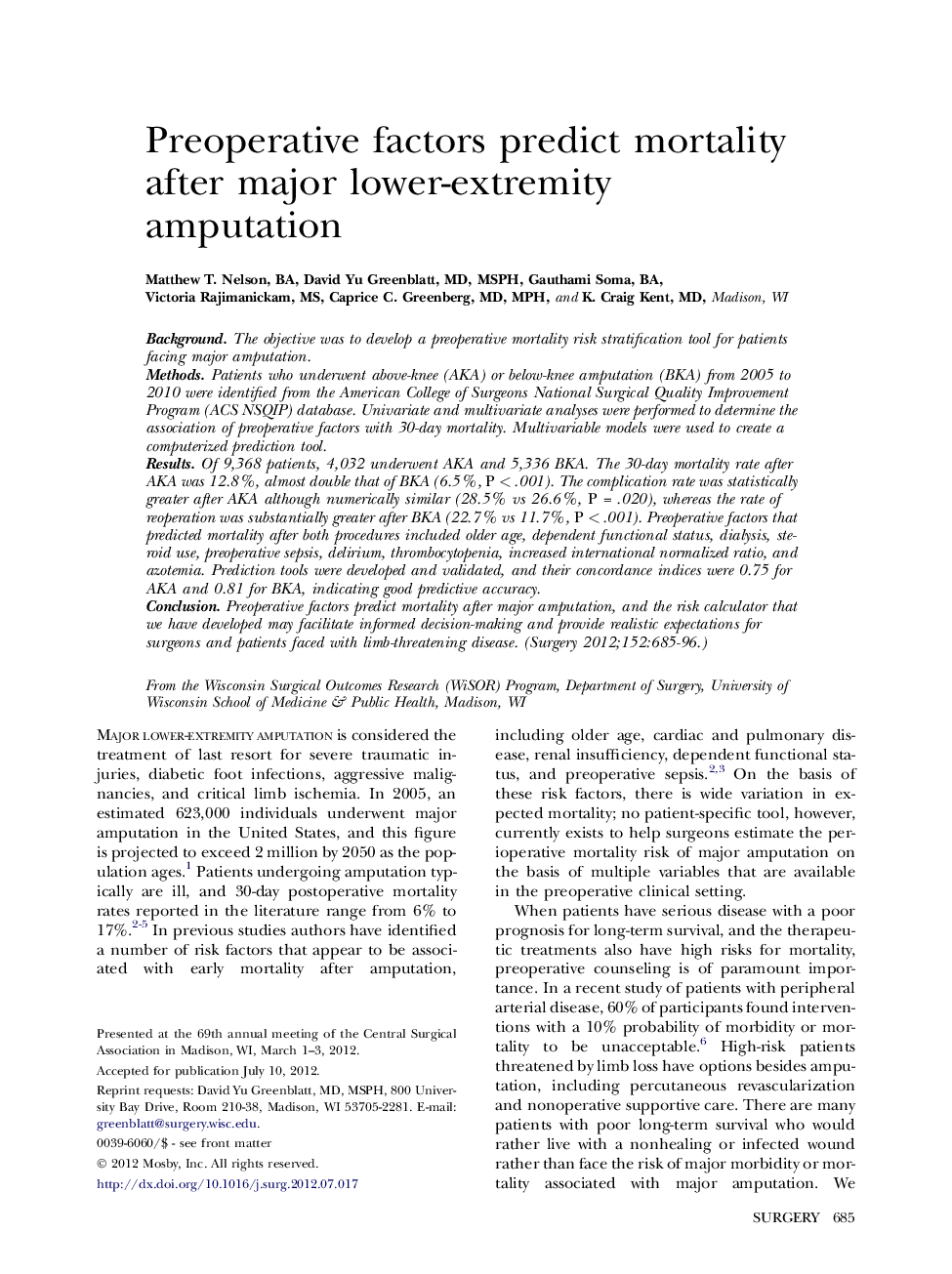| Article ID | Journal | Published Year | Pages | File Type |
|---|---|---|---|---|
| 4307836 | Surgery | 2012 | 12 Pages |
BackgroundThe objective was to develop a preoperative mortality risk stratification tool for patients facing major amputation.MethodsPatients who underwent above-knee (AKA) or below-knee amputation (BKA) from 2005 to 2010 were identified from the American College of Surgeons National Surgical Quality Improvement Program (ACS NSQIP) database. Univariate and multivariate analyses were performed to determine the association of preoperative factors with 30-day mortality. Multivariable models were used to create a computerized prediction tool.ResultsOf 9,368 patients, 4,032 underwent AKA and 5,336 BKA. The 30-day mortality rate after AKA was 12.8%, almost double that of BKA (6.5%, P < .001). The complication rate was statistically greater after AKA although numerically similar (28.5% vs 26.6%, P = .020), whereas the rate of reoperation was substantially greater after BKA (22.7% vs 11.7%, P < .001). Preoperative factors that predicted mortality after both procedures included older age, dependent functional status, dialysis, steroid use, preoperative sepsis, delirium, thrombocytopenia, increased international normalized ratio, and azotemia. Prediction tools were developed and validated, and their concordance indices were 0.75 for AKA and 0.81 for BKA, indicating good predictive accuracy.ConclusionPreoperative factors predict mortality after major amputation, and the risk calculator that we have developed may facilitate informed decision-making and provide realistic expectations for surgeons and patients faced with limb-threatening disease.
